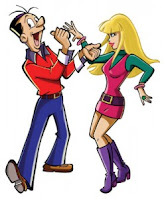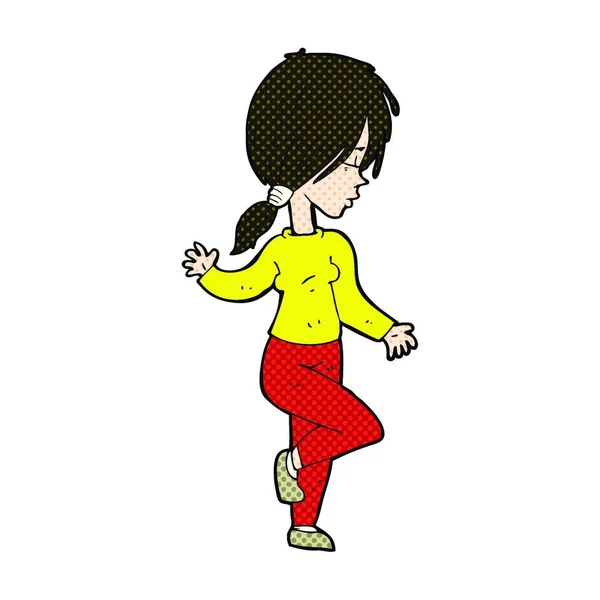¿Cómo nos referimos a las mujeres usando slang?-5 minutos de español / How do we refer to women using slang? - 5 minutes of Spanish / Podcast
Hola, ¿qué tal?
Buenos días,
Muchas gracias por estar aquí buenas tardes o
buenas noches según el lugar en donde estés o a la hora en la que nos escuches.
participando en este podcast sobre el español,
lengua que nos encanta y que hoy nos convoca. Soy Eduardo Satorno profesor de
español para extranjeros en SpanishUp2U y gerente (manager) de Unique Trips tu agencia
de viajes.
Soy Malena Algorta
profesora de español para extranjeros en Spanish in Cabo y en SpanishUp2U. Si
quieres saber más sobre tu sitio de práctica de español cliquea aquí y verás
todos los podcasts, videos y lecciones que tenemos para que domines el español.
Estamos en 5 minutos de español y este es el episodio número 103.
Esta chica es buena 
¡Esta chica está muy buena!
¡Bienvenidos! Gracias por estar semana a semana
junto a nosotros. Por los comentarios, por escuchar y participar de esta
familia que es Spanish in Cabo. También por escuchar, por lo que vamos al
grano.
En estos 5 minutos de
español a la mitad de la semana vamos a hab lar del slang para referirse a
mujeres.
Seguimos con el tema de la mujer como estamos
en mayo. Es como siempre digo yo: en casa tengo la última palabra: sí querida
(yes darling)
Dijiste algo como ir al
grano o ir al punto…bueno, ¡vamos arriba! Tuve una fuente muy interesante para
este tema: Johan que trabaja junto con Alan en subir los materiales de
SpanishUP2u y tiene 18 años.
¿Qué te dijo Johan?
Un poco sorprendido
cuando le pregunté cómo le dices a las
chicas, al principio fue muy tímido hasta que se olvidó su timidez y nos dejó
una muy buena explicación de la perspectiva joven.
Primero: lo de mamacita
es muy, pero muy antiguo y también grosero.
Ya no se usa más mamacita.
Si alguien dice mamacita seguro que es una
persona muy mayor. Por las dudas no le pregunté cuántos años se necesitaban
para ser mayor.
Mamacita está asociado
con hombres que trabajan y que silban a las mujeres cuando pasan…
¿Y chamaca?
Bueno chamaca es una
niña o una chica. También se usa chamaquita, pero lo utilizan personas mayores
no los jóvenes.
¿Y chava?
La chava o la chavita
es otra forma de referirse a mujeres jóvenes y no es ofensivo. Lo que dice
Johan que en la Rosa de Guadalupe se dice y que él nunca lo escuchó es que
digan “mi chava” que eso nadie lo dice. Esta crítica a la telenovela es de
nuestra fuente:
Vamos al vocabulario
Telenovela Soap
opera
Chava girl
Chamaca girl
Silbar to whistle

La chamaca, la chava o la morrita
¿Y cómo se refiere el hombre a su pareja?
Normalmente se dice Mi
vieja, en forma cariñosa claro
Por ejemplo:
Mi vieja me preparó esta comida para el lunch- My wife made me this
food for lunch
Pero cuando le hablan a su pareja le dicen
muchas veces mi amor, mi querida.
Sí claro y también se
usa la palabra chica para referirse a las mujeres esta es la más común.
¿Y los chicos jóvenes cuando hablan de una
chica?
Hablan de la morra o la
morrita, pero no frente a ella,
Morrita- chica
¿Y si la chica les gusta?
Bueno, en este caso
según Johan, dirían: “está pinche hermosa” o “está pinche buena.”
Aquí tendríamos que analizar la palabra pinche,
que es muy común en México. Pinche significa de mala calidad, es negativo
y puede ser muy ofensivo. Pero en este uso es como decir está desgraciadamente
hermosa.
Es como terrific en inglés. Una palabra
negativa usada como positiva.
También tenemos un uso
de estar: “está buena”, en este caso se refiere a la mujer y no es educado y se
usa en el lenguaje hablado, es muy coloquial.
¡Ojo! Diferencias entre ser y estar, si
decimos;
María es buena, esto es
positivo, es una persona generosa y bondadosa
Maria is generous and kind
María está buena, tiene
buenas caderas y su cuerpo parece una botella de coca cola.
Maria is hot, she has nice hips and
her body looks like a coke bottle.
Y te preguntamos a ti; ¿te gustaría conocer más palabras de todos los
días en español?
La respuesta
es muy fácil, cliquea aquí y verás todos
los recursos que tienes en Spanishup2U: videos
de cocina, podcasts, ejercicios y talleres en vivo, si lo sigues, paso a paso,
vas a hablar como un latinoamericano.
También puedes tomar un curso en línea o
aquí bajo el sol de Los Cabos
Podríamos
decirte que con SpanishUp2U vas a mejorar mucho tu español, pero no lo vamos a
hacer, descúbrelo tú mismo.
Muchas gracias por
llegar hasta aquí en el podcast. Y
gracias por escuchar, participar, comentar. Spanish in Cabo y SpanishUp2U no
serían lo mismo sin ti. Queremos que hables y pienses en español, esa es
nuestra misión.
Si te gustó, compártelo.
Nos vemos en las clases o talleres, en la experiencia de cocina y lenguas o 24/7 en SpanishUp2U.
Hasta
pronto
Chau, chau.
Esta morra está pinche hermosa
English version
Hello, how are you?
Good
morning, good afternoon or good evening depending on where you are or what time
you are listening to us.
Thank
you very much for being here participating in this podcast about Spanish, a
language that we love and that today summons us. I am Eduardo Satorno, Spanish
teacher at SpanishUp2U and manager of Unique Trips, your travel agency.
I
am Malena Algorta, Spanish teacher at Spanish in Cabo and at SpanishUp2U. If
you want to know more about your Spanish practice site click here and you
will see all the podcasts, videos and lessons we have for you to master
Spanish. We are in 5 minutes of Spanish and this is episode number 103.
Welcome!
Thank you for being with us week after week. For the comments, for listening
and participating in this family that is Spanish in Cabo. Also, for listening,
so let's get to the point.
In
these 5 minutes of Spanish in the middle of the week we are going to talk about
slang to refer to women.
We
continue with the theme of women as we are in May. It's like I always say: at
home I have the last word: “sí querida” (yes darling).
You
said something like go to the point or get to the point...well, let's go
upstairs! I had a very interesting source for this topic: Johan who works
together with Alan in uploading the SpanishUP2u materials and is 18 years old.
What
did Johan tell you?
A
bit surprised when I asked him how you call girls, at first he was very shy
until he forgot his shyness and gave us a very good explanation of the young
perspective.
First:
“mamacita” is very, very old and also rude.
We
don't use “mamacita” anymore.
If
someone says “mamacita”, he/she is surely a very old person. Just in case I
didn't ask how old it takes to be older.
“Mamacita”
is associated with working men who whistle at women as they pass by....
And
“chamaca”?
Well,
“chamaca” is a girl or a young woman. “Chamaquita” is also used, but it is used
by older people, not young people.
And
“chava”?
La
chava or la chavita is another way of referring to young women and is not
offensive. What Johan says is that in La Rosa de Guadalupe it is said, but that
he has never heard anybody saying "mi chava", that nobody says that.
This critique of the telenovela is from our source:
Let´s
see the vocabulary:
Telenovela -
soap opera
Chava - girl
Chamaca - girl
Silbar
- to whistle
And
how does a man refer to his couple?
Normally
they say “Mi vieja”, in an affectionate way of course.
For
example:
Mi
vieja me preparó esta comida para el lunch - My wife made me
this food for lunch
But
when they talk to their partner they often say “mi amor”, “mi querida”.
Yes,
of course, and the word “chica” is also used to refer to women, this is the
most common one.
What
about young guys when they talk about a girl?
They
talk about the “morra” or “morrita”, but not in front of her,
Morrita
- chica
What
if they like the girl?
Well,
in this case according to Johan, they would say, "está pinche
hermosa" or "está pinche buena."
Here
we would have to analyze the word pinche, which is very common in Mexico.
Pinche means of poor quality, it is negative and can be very offensive. But in
this usage it is like saying she is terribly beautiful.
It
is like terrific in English. A negative word used as a positive.
We
also have a use of estar: "está buena", in this case it refers to the
woman and is not polite and is used in spoken language, it is very colloquial.
Differences
between ser and estar, if we say;
“Maria
es buena”, this is positive, she is a generous and kind person.
Maria is generous and kind
María está
buena, tiene buenas caderas y su cuerpo parece una botella de coca cola.
Maria is hot, she has nice hips and
her body looks like a coke bottle.
And
we ask you; would you like to know more everyday words in Spanish?
The
answer is very easy, click
here and you will see all the resources you have in Spanishup2U: cooking
videos, podcasts, exercises and live workshops, if you follow it, step by step,
you will speak like a Latin American.
You
can also take a course online or here in the sunshine of Los Cabos.
We
could tell you that with SpanishUp2U you are going to improve your Spanish a
lot, but we are not going to, find out for yourself.
Thank
you very much for making it this far in the podcast. And thank you for
listening, participating, commenting. Spanish in Cabo and SpanishUp2U would not
be the same without you. We want you to speak and think in Spanish, that's
our mission.
If
you liked it, share it.
See
you in the classes or workshops, in the cooking and language experience
or 24/7 on SpanishUp2U.
See
you soon
Bye-bye.


Comentarios
Publicar un comentario